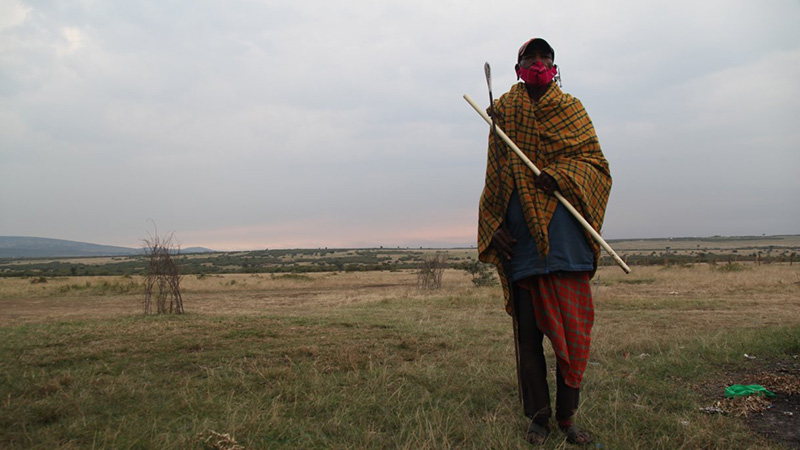NAIROBI (Somaliguardian) – For more than 50 years, Loiman Letolo, 70, has peddled her colourful beaded necklaces and bracelets to safari-goers at the entrance gates to Kenya’s Maasai Mara National Reserve.
As the annual “Great Migration” of millions of wildebeest, zebras and gazelles into the Mara’s vast savannah gets underway, Letolo would normally be earning $50 a day from the droves of binocular-wielding tourists in their open-top jeeps.
The COVID-19 pandemic has, however, put a stop to that.
Instead, the grandmother of eight – wrapped in a vivid red “shuka”, or shawl, and wearing a face mask – queues with scores of women as community elders dole out rations of maize flour, beans and sugar bought with funds raised from well-wishers.
“I’ve been selling at the roadside since I was a teenager. In all my life, it has never been like this. There have always been tourists,” said Letolo, at the Nashulai Maasai Conservancy, a few kilometres from the Maasai Mara’s Sekenani gate.
“Now there are no tourists, there is no dollar and there is no food. If we didn’t get these weekly handouts, we would not be able to eat.”
The coronavirus has crushed Kenya’s billion-dollar tourism industry, leaving tens of thousands of people from one of Africa’s most recognisable tribes – the Maasai – struggling to survive.
This has raised fears amongst some conservationists that without government support or other livelihood opportunities, desperate communities living around protected areas may stop protecting wildlife, resort to poaching to get by, or sell land.
Semi-nomadic cattle, sheep and goat herders, Maasai communities around the Mara have for years relied on money from the hordes of foreigners with zoom lens cameras, eager to capture the greatest movement of animals on the planet.
As shareholders in private conservancies – community-run protected wildlife areas – the tourist dollars earned from lodge and camp stays, game drives, village tours and handicrafts during the high season from July to October are vital.
There are 15 conservancies around the Mara, collectively providing benefitting more than 100,000 people through land lease payments, as well as salaried jobs such as rangers, tour guides, housekeeping staff and drivers.
Nelson Ole Reiyia, founder of the Nashulai Maasai Conservancy – a 20 square km (5,000 acre) protected area on the Mara’s eastern boundary about six times the size of New York’s Central Park – said the fallout from the pandemic has ravaged the lives of the 2,000 people in the conservancy.
“This is usually the busiest time of the year. Our lodge was fully booked, but then COVID-19 happened and almost overnight the bookings were cancelled,” said Reiyia, sitting amid the empty tables and chairs in the mess tent of his camp.
“The coronavirus has decimated the local economy. No one in the community has been spared. People were staring starvation in the face, so we started crowdsourcing for funds to provide weekly food aid, but even that is not sustainable.”
Reiyia said he had been forced to furlough 40 of his 100 workers – mostly housekeeping staff – and also cut salaries for some senior rangers who patrol the conservancy which teems with giraffes and zebra alongside Maasai herders with their cattle.
(REUTERS)
